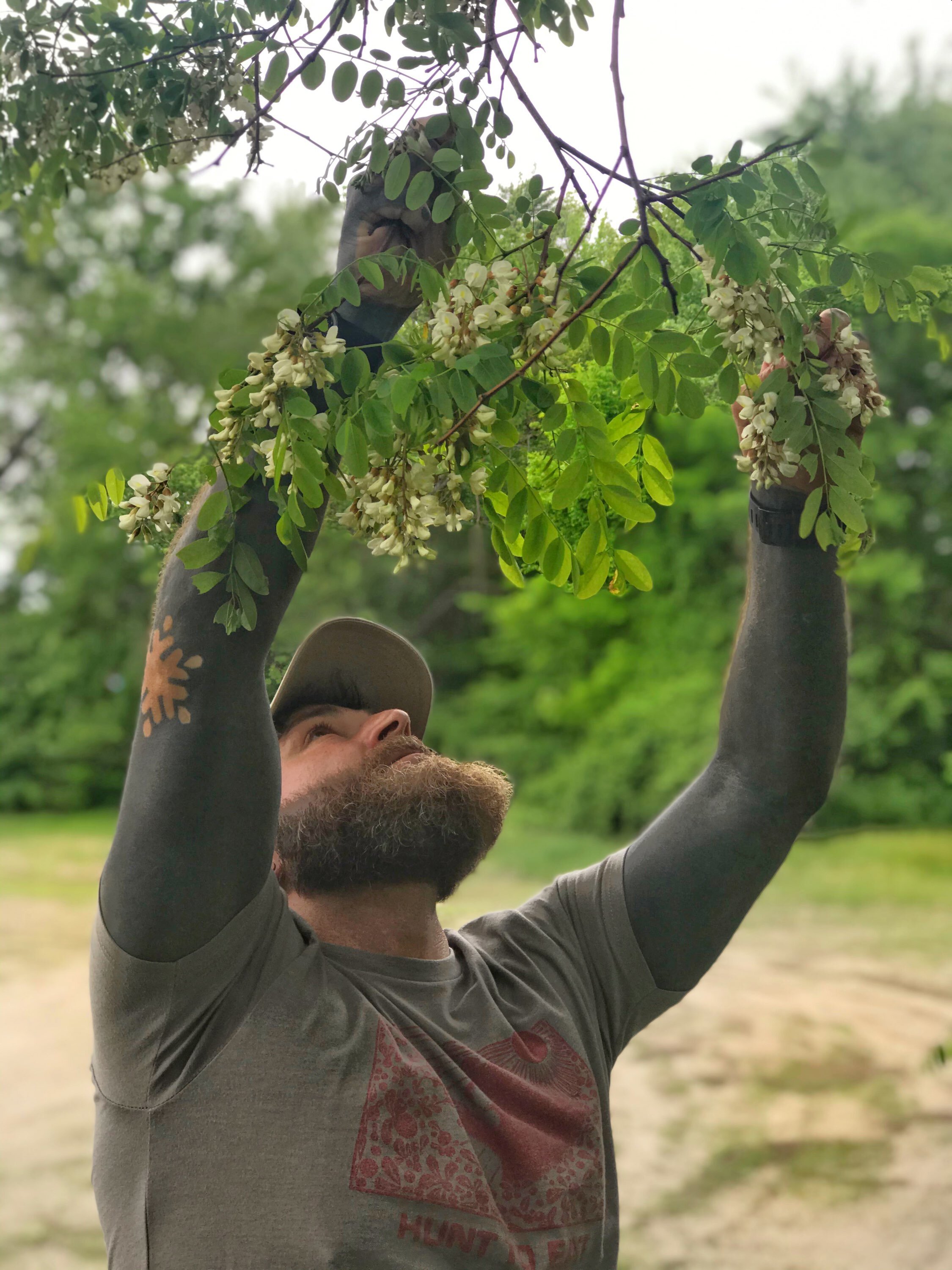In The Field — A Phenologically Specific Meal
phenology | fəˈnäləjē |
noun
the study of cyclic and seasonal natural phenomena, especially in relation to climate and plant and animal life.
As modern hunter-gatherers, our subsistence practice is lived by the seasons. The uninitiated often assume that you simply forage for the species you know all year round, however, the reality is far more complex. Each animal has its season, a specific time when we hunt or fish for them. Sometimes for ecological reasons and often due to the regulations pertaining to them. Similarly, with plants, each species has its specific season, and usually it's just a specific part of the plant that we gather at that time. Nature’s calendar dictates what we harvest.
Here in Maine, this part of the year could easily be called “mosquito season” (contrasted by the black fly season that just ended and the deer fly season which will soon begin), but it’s also the time of brook trout, bracken fern fiddleheads, and black locust flowers.
Now that the mountain streams are warming up a bit, I like to head into the mountains chasing wild-born brookies. These small salmonids are members of the genus Salvelinus — the Char — though we commonly call them trout. While the “sporting” way to catch them is on the fly rod, I’m fishing for a meal, and prefer an ultralight spinning rod with simple worms as bait. My strategy is to target the deeper pools of mountain brooks at dusk when the fish really start feeding. It’s difficult to describe just how beautiful these fish are and photos scarcely do them justice. But here you can see the distinctive red spots with blue halos that have caused many an angler to develop a consuming passion for the species.
Bracken fern is a cosmopolitan (found all over the world) plant, whose use as a food resource reaches back into antiquity. It matures asynchronously, which makes the growing season longer than for many other foraged species, allowing for several meals throughout the late spring. Sounds great, right? Well… here’s the catch. There’s a carcinogen found in its tissues that must be leached away before they can safely be consumed. Hank Shaw has done a great job explaining that here, though I use a slightly modified version of his recipe when I prepare them. While he recommends a 2-minute cook time, I’ve extended that to 4-minutes followed by his recommended 1-hour ice bath.
While that might seem like a lot of extra work, I think this asparagus-like vegetable is worth your time. It’s delicious, widely available, and gorgeous on your plate. Knowledge of and experience with this species is one more step towards food sovereignty and self-sufficiency. Give it a try, you’ll be glad you did.
While brook trout can be fished this way for several months and the bracken fern season goes on for many weeks, the opportunity to forage black locust flower lasts just about a fortnight. I usually smell these fragrant, edible blossoms each year before I spot them. Their aroma is reminiscent of lilies and jasmine, with the unmistakable leguminous flavor of fresh peas. Their bouquet comes through on your palate but that doesn’t diminish its vegetable-like qualities. It’s the optimal base for a salad, easily replacing the greens you’d normally use as your base.
Taken together, a few hours in the field this time of year can easily fill your plate with wild ingredients. Here we’ve pan-fried our trout in bear fat with a light dusting of flour, sautéed our already-leached bracken fern in butter, and tossed our wild salad of black locust, with a few oxeye daisy greens, balsam and white pine tips, cattails shoots, wild strawberries, and then topped it with an apple cider vinegar and olive oil vinaigrette.
What results is a phenologically specific meal, a snapshot in time. A plate we won’t enjoy again for 12 months. And that’s the point. We hunt and gather on nature’s schedule. These ingredients aren’t available at the supermarket, instead, we must approach the natural world with patient anticipation. We can’t rush it, we can’t pay extra to expedite the process. And, for us, that’s all part of the magic.










